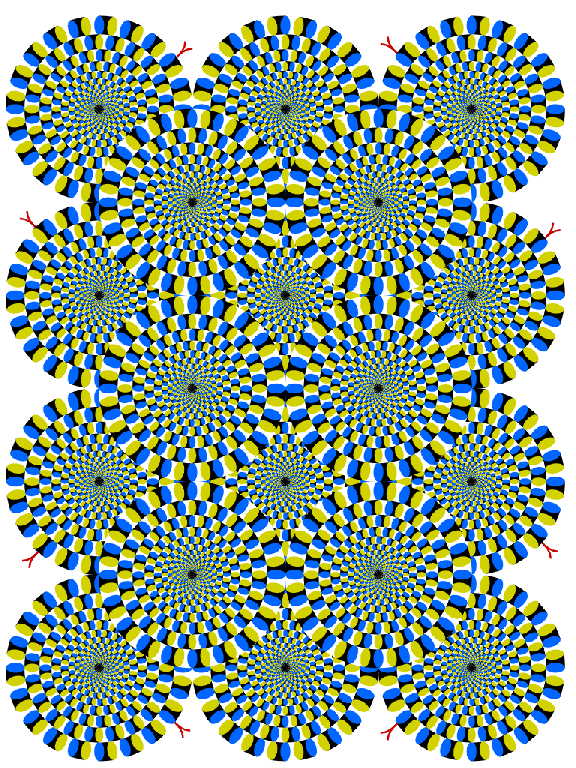B.S. for Type A Personalities: Visual Illusion B.S.
Posted May 23, 2009
![]()
There are a number of websites with “stress tests” which involve visual illusions such as the one below by Akiyoski Kitaoka. The authors of these sites claim that the speed of the movement perceived is a measure of one’s ability to cope with stress, and even that criminals see rapid movement while children and the elderly see no movement at all!
Hogwash.
Although we do not fully understand the mechanisms which drive illusions of motion like this one, we do know a few things. This explanation is watered down a bit; consult the references which follow for more technical explanations.
Perception involves a number of layers of neural circuitry, starting with receptors in the eye. There are limits to how often these receptors fire — once they have fired, a refractory period must pass before they can fire again. To compensate for this, our eyes jiggle a bit. Some people’s eyes jiggle a little more than others. The illusion of movement is most like due to the interaction of this “jiggle” with luminance (brightness) contrasts which, through these layers of normal neural circuitry, activate feature detectors (in the visual cortex) for motion.
There is absolutely no evidence to suggest that the amount of jiggle you experience or the amount of movement you perceive is related to your ability to handle stress or your propensity to commit violent crimes.
Most of the websites I found use the same set of illusions. It seems this is a good example of perpetuating myth by sharing information without examining its source. One of them was even called “Spread the Word Email”. Argh.
Kitaoka, A., & Ashida, H. (2003). Phenomenal Characteristics of the Peripheral Drift Illusion. Vision, 15 (4), 261-262
Gregory, R. L., & Heard, P. F. (1983). Visual dissociations of movement, position, and stereo depth: Some phenomenal phenomena Quarterly Journal of Experimental Psychology, 35A, 217-237
Backus, B. (2005). Illusory motion from change over time in the response to contrast and luminance Journal of Vision, 5 (11), 1055-1069 DOI: 10.1167/5.11.10
Comments for this page are closed.




